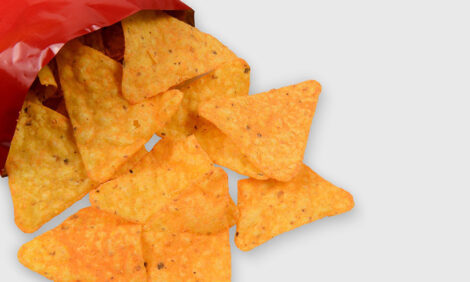



Swine Dysentery – a Question of Nutrition?
Veterinary treatment, disinfection and fly and rodent control, feed formulation and feed additives all play a significant role in the control of swine dysnetery, according to Franz Waxenecker, Director Product Development for Biomin GmbH.Efficient pig production requires animals with good intestinal health. Indigestion, caused by malnutrition or infections, has an immediate effect on the pigs' health and well-being – and subsequently on the profitability of the business.
Antibiotic performance enhancers have proven to be supportive in maintaining intestinal health. Ileitis, or PIA, was not an issue until tylosin phosphate was prohibited in the EU in 2000 because the pathogen, Lawsonia intracellularis, was kept in check by this antibiotic growth promoter. The ban of the remaining antibiotic performance enhancers in 2006 led to the exclusion of many substances, including salinomycin sodium (although it could remain in use as a coccidiostat). This ionophore was able to, and still could, keep the bacterium which causes swine dysentery, Brachyspira hyodysenteriae, under control.
Swine dysentery (SD) is a disease which affects mainly the large intestine (Figure 1). It occurs primarily in pigs of about 30kg to 80kg. The symptoms include grey or brown diarrhoea (Figure 2). Infected animals also show inclination of the flanks, anaemic colour and poor growth. The disease can be identified in laboratory tests using faeces smears. Out of numerous strains of Brachyspira, only B. hyodysenteriae and B. piloscoli are recognized as pathogens. The percentage of farms that have been affected by B. hyodysenteriae in the US, Sweden and Denmark is estimated at 10 to 26 per cent (Mapother, 1993; Fellström, 1998; Möller, 1998), although this data dates back to the time before salinomycin sodium was banned in the EU.

below: Figure 2. Brachyspira cause grey and brown diarrhoea

SD is spread by oral contact with the pathogens in the environment, or with the faeces of infected animals. B. hyodysenteriae are capable of surviving within manure for up to two months, especially at low temperatures (winter). The pathogens are shielded from the stomach acids and also from feed additives such as organic acids by an outer protective layer, enabling them to pass through to the intestines unharmed. They colonise the mucous membrane of the large intestine, multiply and then infiltrate and destroy the intestinal cells. This is what causes blood loss in the large intestine and, consequently, bloody diarrhoea.
From the animal nutrition point of view, these bacteria are complicated to deal with, making it difficult to effectively prevent the disease merely on the basis of diet. First of all, the outer mucous layer protects Brachyspira, and secondly, it is more difficult to exert nutritional influence in the hind gut, where Brachyspira accumulates.
In order to prevent swine dysentery, and in case swine dysentery occurs on a farm, the following steps should be taken:
- Diagnosis by a veterinarian (identification of the pathogen)
- Room and slurry disinfection
- Reduction of transmission vectors, such as rodents and flies, and
- Dietary measures and feed composition
Veterinary Diagnosis
In order to ensure that the symptoms are in fact due to swine dysentery, contact a veterinarian.
Reduction of pathogens
Due to the fact that most Brachyspira infections are spread by contaminated manure, an AIAO management programme, as well as room and slurry disinfection is an appropriate way to reduce pathogenic pressure.
Rodent and fly control
Continuous extermination of mice, rats, and flies is essential in preventing dysentery. Mice and rats are known carriers of B. hyodysenteriae, spreading the disease through their faeces, making it possible for them to set off the disease again after the pens have been cleansed. Flies primarily carry the pathogens from the excretion area to the livestock area of the pens.
Dietary measures and feed composition
The ability to control B. hyodysenteriae with nutritional measures is limited, although it is possible to positively influence the course and severity of the illness with dietary means:
- The higher the digestibility of the ration and the lower the amount of non-degradable starch, the lower the risk of developing dysentery. Supplying the livestock with highly digestible rations based on rice and animal protein led to a lower incident of dysentery, compared to feeding rations based on barley, which caused the infection to break out in all animals. Diets based on heat-treated corn led to a lower incidence of SD compared to barley (Pluske et al., 1996). This was also confirmed by Prohaska and Lukacs, 1984 and Siba, 1996, who noticed that fewer pigs developed the disease when supplied with rice and animal protein ¡V which is certainly of no practical relevance. The most cases of dysentery were observed when feed consisted of a mixture of wheat, barley and lupins.
Corn silage has a positive effect due to the natural composition of corn, as well as its low buffer capacity, and the partial 'predigestion' during ensilage. Protein sources, such as canola meal, canola cake and sunflower cake show a lower protein digestibility compared to soy products. At the same time they contain higher levels of fermentable substances. Therefore a maximum amount of five per cent of these components should be included in the feed rations of pigs once dysentery has occurred within the population. In healthy livestock, of course, these raw materials can be used in higher percentage. Furthermore, low-protein diets can minimise the level of protein that is available for fermentation in the hindgut.
- Unlike other gastrointestinal infections, dysentery occurs primarily in poor eating animals. This emphasises the importance of good quality raw materials. It has been observed that the number of pigs, which developed SD following artificial oral infection, rose from 60 per cent to 100 per cent when pigs starved two days prior until two days after the infection. Several stress factors, which lead to a reduction in feed intake, seem to support the outbreak of the disease (Heinrizi, 2001).
The higher the number of fermentable substances in feed, the better the conditions for Brachyspira bacteria to multiply, causing greater risk of developing dysentery. Feed containing high levels of fibre, as well as fermentable substances, do promote Brachyspira reproduction (Hampson et al., 1997; Siba et al., 1994).
| Amount of bacterial fermentable substances (BFS) in various feedstuffs | ||
|---|---|---|
| Feedstuff | BFS (g/kg dry matter) |
|
| Lignocellulose | ±0 | |
| Triticale | 25 | |
| Wheat | 43 | |
| Corn | 52 | |
| Rye | 66 | |
| Barley | 71 | |
| Oats | 75 | |
| Soybean meal 48% | 157 | |
| Sunflower seed meal | 163 | |
| Soybean meal 44% | 189 | |
| Wheat bran | 191 | |
| Canola meal | 215 | |
| Canola cake | 261 | |
| Sugar beet pulp | 664 | |
- A low pH-value within the large intestine (colon pH 6) inhibits the growth of Brachyspira, whilst a higher pH in the colon promotes Brachyspira development and subsequently the outbreak of dysentery (Prohaska and Lukacs, 1984). The pH-value within the stomach has no effect upon Brachyspira bacteria or on the development of dysentery (Jacobson, 2003).
It is essential to bear in mind that it is difficult to influence the pH-value of the large intestine by organic or inorganic acids. Most of the organic acids, especially those that are added directly to the feed, are active only in the first segments of the digestive system. This is where Brachyspira are able to survive due to their protective mucous layer. One method of successfully transporting an acidifier to the large intestine, and subsequently influencing the pH, is to use an organic acid that has been combined on a sequential-release-medium (SRM), which releases the acid throughout the gastrointestinal tract, including the large intestine.
- Feed additives which are able to improve digestibility of the diet can reduce the nutrient flow into the hind gut and help to prevent aggregation of Brachyspira. Phytogenics are well known to increase digestibility of the diet and to reduce ammonia in the hindgut. Furthermore, feed additives are known to support regeneration of the intestinal mucosa, which can be heavily destroyed during SD.
Swine dysentery, as well as other gastrointestinal diseases, requires multifactorial solutions. Veterinary treatment, disinfection and fly and rodent control do play a significant role, as well as feed formulation and feed additives. This becomes more important when antibiotics and growth promoters are restricted in use or even banned.
Further Reading
| - | Find out more information on swine dysentery by clicking here. |
October 2009







